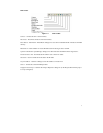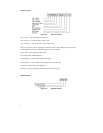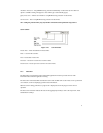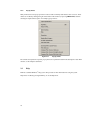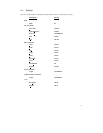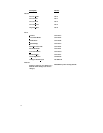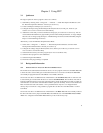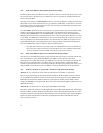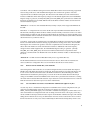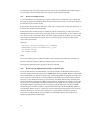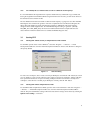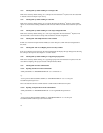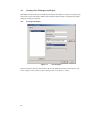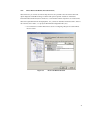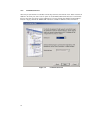15
User Mode – The User Mode Test Program and User Mode Micro-Kernel need to be already programmed
and executing on the device. The initial Bit Rate Register value is held in the ‘gentest.h’ file and is
compiled into the User Mode Test Program; this allows the kernel initialise the serial communications
interface to 9600 baud. If the clock frequency changes from the default supplied value, the initial Bit Rate
Register setting in ‘gentest.h’ [normally MA_BRR_SCI or MA_BRR_SCI1] will need to be modified and
the kernel recompiled. The User Mode Main Kernel and the Write and Erase modules are held on the PC
and downloaded as required.
“Protocol C” – For devices with embedded kernels (Currently 0.18μm). These support the FDM but not
the UPB.
Boot Mode – A configuration file is stored on the PC which provides FDT with details about the device,
but the kernel (including the Write and Erase modules) resides internally on the device. There is no need to
rebuild anything for different clock frequencies in Boot Mode; this information is stored in the FDT project
and downloaded at runtime and initial communication is achieved by the autobaud (where FDT sends 0x00
data until the device synchronises with it).
User Mode – Some boards are supplied with a User Mode kernel. Similarly to the Protocol B User Mode
kernels, User Mode Kernel needs to be already programmed and executing on the device. The initial Bit
Rate Register value is held in the ‘gentest.h’ file and is compiled into the User Mode Test Program; this
allows the kernel initialise the serial communications interface to 9600 baud. If the clock frequency
changes from the default supplied value, the initial Bit Rate Register setting in ‘gentest.h’ [normally
MA_BRR_SCI or MA_BRR_SCI1] will need to be modified and the kernel recompiled. The main
difference to the Protocol B User Mode Kernels is that the Write and Erase modules are held internally on
the device.
“Protocol D” – For R8C and former Mitsubishi family devices (eg. M16C, M32 etc).
The E8 and FoUSB boards can be used with some Protocol D devices. The kernels are internal to the
device, but FDT uses configuration files to store information about the device characteristics.
3.2.5
What are the fcf and fdm files, can I edit them?
Stored alongside the other kernel files, the .fcf (Flash Configuration File) and .fdm (Flash Development
Module) files hold details about the device and kernel. Each supported device in each kernel directory has
its own .fcf and .fdm file. Information such as the RAM size, Flash size, Erase Block Register details,
default baud rate and default crystal frequency is stored in the fcf file and details about the allowed pin
settings for the FDM is stored in the FDM file. Each of these files is protected with a checksum, so editing
will render them invalid and FDT will detect this. Upon detection of an invalid checksum an fcf or fdm file
FDT will warn the user but will not prevent use of the modified files.
3.2.6
Can I use FDT if I do not have Local Machine Administrator rights for my PC?
Yes, but only once it is installed and configured. To install FDT and for various configuration tasks, you
must have local administrator rights; this is because some settings are stored in the
HKEY_LOCAL_MACHINE registry area. Once FDT is installed and configured you will be able to use it
with certain limitations. Configuration tasks such as adding new kernel entries to the registry so that they
will be available in the Project Wizard in future requires Local Machine Administrator rights. This includes
adding the Prior Generic Device entry (an administrator must first connect to the Generic Device to allow
the Prior Generic Device entry to be created. Additionally the FDT Advanced Setup utility which is used



